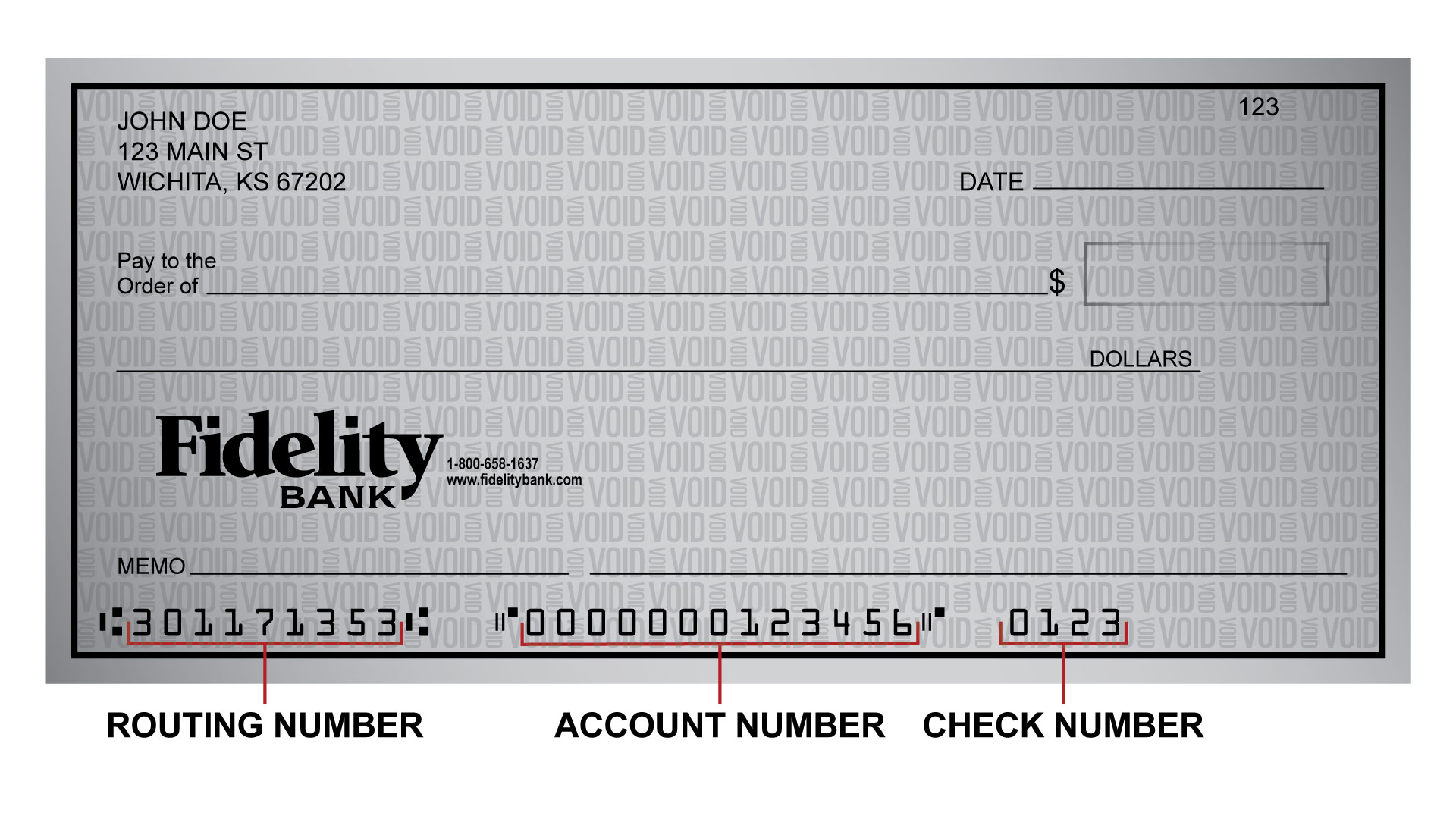Introduction
Welcome to the world of investing with Fidelity! Whether you’re a seasoned investor or just starting out, Fidelity offers a wide range of investment options to help you grow your wealth. Occasionally, you may find the need to change or adjust your investments to align with your financial goals or market conditions. In this article, we will guide you through the process of changing investments on Fidelity.
Investing in the stock market or other financial instruments can be an exciting and rewarding journey. However, it’s important to regularly review and update your investment portfolio to ensure it remains in line with your needs and objectives. Fidelity’s user-friendly online platform makes it easy to make changes to your investments with just a few clicks.
We understand that making investment decisions can sometimes feel overwhelming, especially if you’re new to investing. That’s why we’ve created this step-by-step guide to help you navigate the process of changing investments on Fidelity. By following these simple instructions, you’ll be able to confidently make informed decisions and take control of your investment portfolio.
Before we dive into the steps, it’s worth noting that Fidelity provides plenty of resources and tools to help you make informed investment choices. It’s always a good idea to do your research, consult with a financial advisor if needed, and consider your risk tolerance and time horizon before making any changes to your portfolio. Now, let’s get started!
Step 1: Log in to your Fidelity account
The first step to changing investments on Fidelity is to log in to your account. Fidelity provides a secure and user-friendly online platform that allows you to access and manage your investments with ease.
To log in to your Fidelity account, open your preferred web browser and visit the Fidelity website. On the homepage, you’ll find the “Log In” button located in the top right corner. Click on this button to proceed.
If you already have a username and password, simply enter them in the designated fields and click “Log In.” Alternatively, if you’re a new user or need to create an account, click on the “Register” or “Get Started” button to begin the registration process. Follow the prompts to provide the necessary information and create your Fidelity account.
Once you’ve successfully logged in, you’ll be directed to your account homepage, which serves as the hub for managing your investments and accessing various features and tools.
It’s important to note that Fidelity takes the security of your account seriously. Therefore, it’s advisable to choose a strong, unique password and enable two-factor authentication for an added layer of protection. This will help safeguard your investment information and prevent unauthorized access.
Now that you’re logged in to your Fidelity account, you’re ready to proceed to the next step and navigate to your investment page. Let’s move on to Step 2!
Step 2: Navigate to your investment page
Once you’ve logged in to your Fidelity account, the next step is to navigate to your investment page. This is where you can view all of your existing investments and make changes as needed.
To access your investment page, locate the navigation menu on the Fidelity website. The specific location of the menu may vary depending on the layout of the platform, but it is typically found in the top or side menu bar.
Look for a section titled “Investments,” “Portfolio,” or something similar. Click on this section to expand it and reveal the available options.
Within the investment section, you’ll find various sub-sections such as “My Portfolio” or “Holdings.” Click on the appropriate option that allows you to view your individual investments.
Once you’ve accessed your investment page, you’ll see a comprehensive overview of your current holdings. This page typically displays important information about your investments, including their ticker symbols, names, current value, and any gains or losses.
Take some time to familiarize yourself with the layout and organization of the investment page. Fidelity often provides intuitive features and tools to help you analyze and monitor your investments effectively.
If you have a large number of investments, you may need to use the search bar or the sorting options available to find a particular investment that you wish to change. Additionally, Fidelity may offer filtering options to narrow down the display based on specific criteria such as asset class, sector, or performance.
Now that you’re on the investment page and ready to make changes, let’s move on to Step 3 and learn how to select the investment you want to change.
Step 3: Select the investment you want to change
Now that you’ve navigated to your investment page on Fidelity, it’s time to select the specific investment that you want to change. Whether you’re looking to adjust your asset allocation, sell a position, or make any other modifications, Fidelity provides the tools to help you make these changes.
Scan through your list of investments and locate the one that you want to make changes to. This can be done by visually searching for the investment name or by using the search or filtering options available on the investment page.
Once you’ve identified the investment, click on it to access the detailed information and options for making changes.
Fidelity typically provides an individual investment page that contains comprehensive information about the selected investment. Here, you’ll find details such as the current price, performance charts, company information, and any news or research reports available.
Depending on the specific investment, you may also find additional options or tabs for adjusting various aspects of the investment. For example, if you’re looking to change the amount invested, you may find an “Add to position” or “Withdraw from position” button.
It’s important to take your time and review the investment details before proceeding with any changes. Consider factors such as the investment’s historical performance, risk level, and your personal investment goals.
If you’re unsure about which changes to make or need more information, Fidelity provides tools and resources to help you make informed decisions. Take advantage of research reports, market news, and expert analysis available on the platform.
Once you’re confident with your decision and ready to proceed, move on to the next step to make the desired changes to your investment on Fidelity.
Step 4: Review the investment details
Now that you’ve selected the investment you want to change on Fidelity, it’s important to review the investment details before making any modifications. This step ensures that you have a clear understanding of the investment’s current status and helps you make informed decisions.
On the investment page, Fidelity typically provides a comprehensive overview of the investment’s key details. This includes information such as the name, ticker symbol, current price, performance charts, and any relevant news or research reports.
Take some time to carefully review this information. Consider factors such as the investment’s historical performance, sector or industry trends, and overall market conditions. This evaluation can help you assess the potential risks and rewards associated with the investment.
Fidelity often provides additional tools and features to assist in the analysis of an investment. Look for options like risk rating, expense ratio, and performance comparisons to similar investments. These features can give you valuable insights to support your decision-making process.
As you review the investment details, it’s essential to align your investment objectives and risk tolerance with the characteristics of the investment. Evaluate if the investment still fits your overall financial goals and if it remains a suitable choice for your portfolio.
If you have any doubts or need further guidance, Fidelity offers resources such as investment tutorials, educational articles, and access to expert advisors. Utilize these resources to make well-informed decisions regarding your investment changes.
Once you have thoroughly reviewed the investment details and feel confident in your decision, proceed to the next step to make the desired changes to your investment on Fidelity.
Step 5: Make the desired changes to your investment
Having reviewed the investment details on Fidelity, it’s time to make the desired changes to your investment. Whether you want to buy additional shares, sell part or all of your position, or reallocate your portfolio, Fidelity offers a simple and straightforward process to make these modifications.
On the investment page, look for the options or buttons that allow you to make changes. These options may vary depending on the specific investment and your account type. Common actions include “Buy,” “Sell,” “Exchange,” or “Reallocate.”
If you’re looking to buy additional shares of the investment, click on the “Buy” button or its equivalent. Specify the desired amount or the number of shares you wish to purchase. Fidelity may provide options like “Market Order” or “Limit Order” to choose the execution type for the purchase.
Alternatively, if you want to sell part or all of your investment, click on the “Sell” button or its equivalent. Specify the quantity or dollar amount you want to sell. Again, Fidelity may offer options like “Market Order” or “Limit Order” to choose the execution type for the sale.
If your goal is to reallocate your portfolio by moving funds from one investment to another, look for an “Exchange” or “Reallocate” option. Select the investment you want to sell from and the investment you want to buy into. Specify the quantity or amount for each.
Before executing any changes, it’s crucial to double-check the details to ensure accuracy. Confirm the investment name, quantity, amount, execution type, and any associated fees or expenses. Fidelity generally provides a summary or confirmation screen where you can review the changes before finalizing them.
If you’re unsure about the changes you want to make, Fidelity may offer additional features such as “Save as Draft” or “Send for Review.” These options allow you to save your changes as a draft or seek guidance from a financial advisor before proceeding.
Once you’re satisfied with the changes and have reviewed all the necessary information, click on the “Confirm” or “Execute” button to proceed with the modifications.
Congratulations! You’ve successfully made the desired changes to your investment on Fidelity. After executing the changes, it’s important to review the updated investment information, which we’ll cover in the next step.
Step 6: Confirm the changes
After making the desired changes to your investment on Fidelity, it’s essential to confirm your modifications before they are executed. This step ensures that you have reviewed the details accurately and gives you an opportunity to make any necessary adjustments.
When you click on the “Confirm” or “Execute” button to proceed with the changes, Fidelity will usually present a confirmation screen or prompt. This screen summarizes the changes you have made, including the investment name, quantity, execution type, and any associated fees or expenses.
Take a moment to carefully review this information and ensure that everything is correct. This step is crucial to avoid any unintended transactions or errors in your investment portfolio.
If you notice any discrepancies or need to make adjustments, most platforms will provide options to go back and edit your changes. Look for buttons like “Edit” or “Make Changes” to modify the details before confirming.
While reviewing the confirmation screen, also pay attention to any notifications or warnings regarding the changes you are making. Fidelity may alert you about potential tax implications, trading restrictions, or other important considerations that could impact your investment decision.
If you’re unsure about any aspect of the confirmation screen or have questions, Fidelity offers support and guidance. Take advantage of options like live chat, phone support, or access to a financial advisor to seek clarification and ensure that you have a clear understanding of the changes you are making.
Once you have thoroughly reviewed and confirmed the changes, proceed with finalizing the modifications. Click on the “Confirm” or “Execute” button to initiate the transaction.
After confirming the changes, Fidelity will typically provide a confirmation message or screen to acknowledge the successful execution of your instructions. Take note of any reference numbers or confirmation details provided, as they can be useful for future reference or inquiries.
Now that you have confirmed the changes, it’s time to move on to the next step and review the updated investment information.
Step 7: Review the updated investment information
After confirming the changes to your investment on Fidelity, it’s important to review the updated investment information. This step allows you to verify that the modifications have been successfully processed and serves as a final check to ensure accuracy.
Once you have completed the confirmation process, Fidelity typically provides a summary screen or notification that acknowledges the execution of your instructions. This summary will include details such as the updated investment name, quantity, and any associated transaction fees.
Take a moment to carefully review this information and compare it with your intended changes. Ensure that the investment quantity matches your desired adjustments and that any fees or expenses are as expected.
In some cases, Fidelity may also provide a revised portfolio overview or investment snapshot. This updated view will reflect the changes you made and allow you to see the impact on your overall investment portfolio.
Whether you bought additional shares, sold a position, or reallocated your portfolio, it’s important to assess the updated investment information in the context of your overall investment strategy and objectives.
Make sure to reconcile the changes with your original investment goals and evaluate whether the modifications align with your desired asset allocation, risk tolerance, and anticipated returns.
If you have any concerns or notice any discrepancies in the updated investment information, Fidelity offers customer support channels to address your inquiries. Reach out to their customer service, utilize live chat, or consult with a financial advisor for guidance and clarification.
By reviewing the updated investment information, you can ensure that the changes you made on Fidelity have been correctly implemented and that your investment portfolio reflects your intended modifications.
Congratulations! You have successfully reviewed and confirmed the updated investment details on Fidelity. Your investment portfolio is now adjusted according to your instructions, and you can proceed with confidence as you pursue your financial goals.
Conclusion
Changing investments on Fidelity is a straightforward process that allows you to adapt your portfolio to align with your financial goals and market conditions. By following the step-by-step guide we’ve provided, you can confidently navigate through the platform and make informed decisions about your investments.
Remember to regularly review and evaluate your investment portfolio. Market dynamics, economic changes, and your personal circumstances may warrant adjustments to ensure that your investments continue to meet your objectives.
When making changes to your investments on Fidelity, take advantage of the platform’s resources and tools. These include research reports, market news, expert analysis, and access to financial advisors. Utilize these resources to gain insights and make well-informed decisions.
Additionally, it’s important to exercise caution and consider the potential risks associated with any investment changes. Assess your risk tolerance, time horizon, and investment objectives before proceeding with modifications.
Throughout the process, Fidelity prioritizes the security and protection of your account. Take proactive measures to safeguard your information by choosing a strong password, enabling two-factor authentication, and being cautious of phishing attempts or suspicious activity.
By taking the time to understand the steps involved in changing investments on Fidelity, you can confidently manage your portfolio and adapt to changing market conditions. Reassess your investments regularly and make adjustments as needed to stay on track towards your financial goals.
Remember, investing involves risks, and it’s important to consult with a financial advisor or conduct thorough research before making any investment decisions.
Now that you have a better understanding of how to change investments on Fidelity, you’re equipped with the knowledge to make informed decisions and navigate the online platform with ease. Start exploring the possibilities and take control of your investment journey.

























